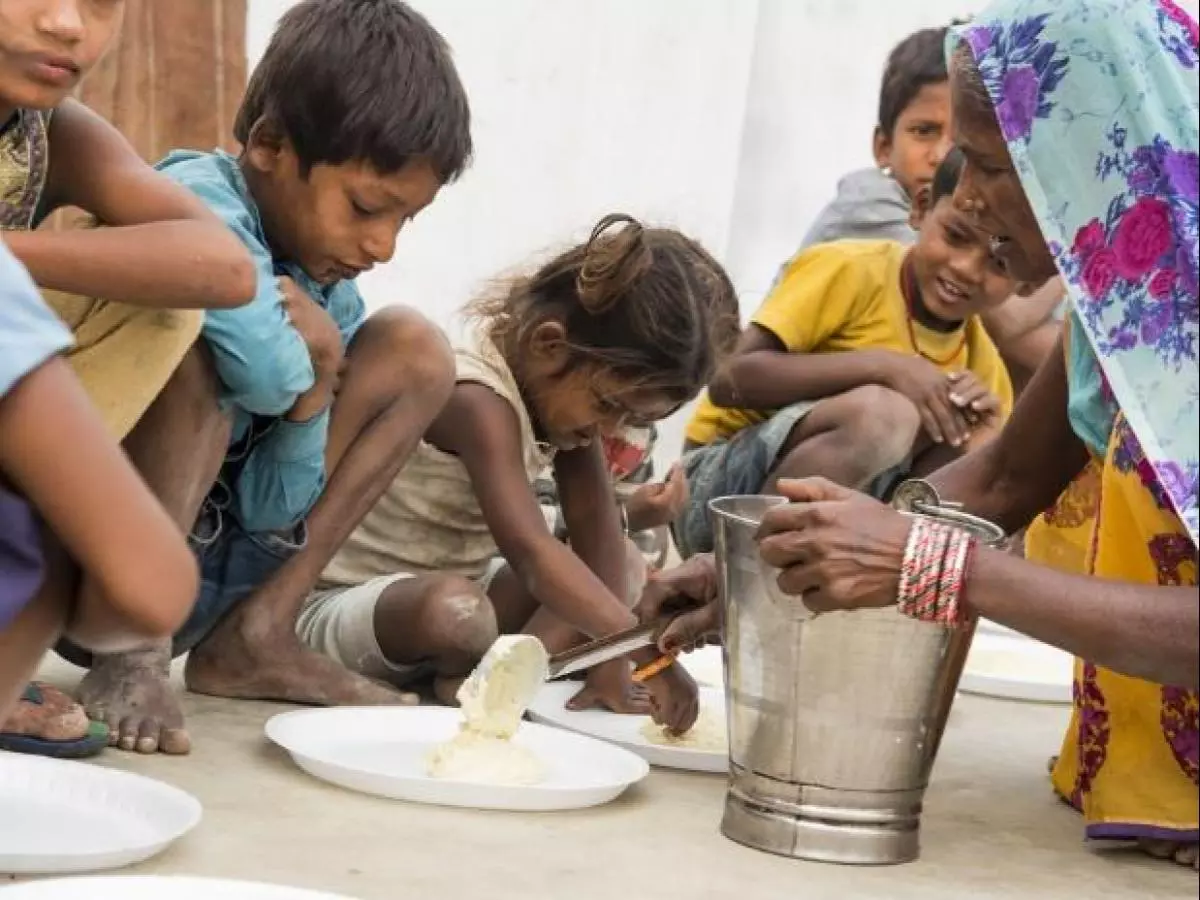
Denying hunger statistics will not make it disappear
text_fieldsImage only for representation
India has fallen six places from 94 last year to 101 in the Global Hunger Index of 2021, signalling "severe" rates of starvation in the population. India is now a more 'hungry' nation than its neighbours Bangladesh, Nepal, Myanmar and even Pakistan according to the index which looks at 116 countries in total. The only 15 countries in a worse state than ours include the likes of Somalia, Central African Republic and Yemen. And yet the Indian government has only dismissed the ranking as one resulting from bad methodology, with the Women and Child Ministry denying thay the index reflected any kind of ground reality. The disagreement with the figures as per the methodology that hasn't changed for years s is not that the numbers are wrong, but because the government objects to the method of ranking countries apparently. And yet similar indices had been used by the same government to vilify governments of the past!
The Global Hunger index is a peer-reviewed publication prepared jointly by two independent agencies. Malnutrition,low birth weight in children, rates of stunted growth and infant mortality are the metrics used to determine a country's position in the Index. Should the Indian government discount the message contained in the index by instantly dismissing it on the basis of India's ranking? That message is the need for urgent and strong measures to improve the ground reality. At about the same time the Hunger Index came out, the news the world heard from India was that seven institutions had been set up to help the country achieve self-sufficiency in arms manufacturing and to attain the status of a major military power.The skewed priorities of the country are evident in the food and defence budget allocations we spend. The Hunger Index is in reality a wake-up call telling us to find , at least from now on, a solution for poverty. The government is concerned that those who compiled the index did not pay attention to food availability or availability of free food distribution. But even Nobel Prize winning economist Amartya Sen had warned against assuming that free distribution of food alone would eliminate starvation. In 2020, when we were 94 on the Hunger Index and in 2019 when we were pushed to 102, Food Corporation of India warehouses had more grain than everyone needed. The real problem here is in food distribution and the purchasing power of the people.
The Central government's stance on farmer's issues will further aggravating the situation. The excuse that hunger is not an issue in India because of plentiful food stocks will tantamount to laughing at the poor. In truth, while 'development' is touted all round the country, hunger gnaws at its belly. The proof of poverty is simply that people are lying hungry. Indications of high infant mortality rates and lack of nutritious food are further evidence. What is worse is that it is after these statistics were collected for study that the Covid-19 pandemic hit India with greater force and so the real situation post-pandemic must be even worse. Before dismissing the Hunger Index, we should also look at the findings of the National Family Health Survey last December. At that time, it was understood that growth in children was showing signs of stuntedness and anemia was widespread among women and children in 13 states. The "PM Poshan" project was also launched because of this very issue.
What the newly released poverty index demand is again that attempts of solution should continue with greater intensity. The solution is simple - treat the cause, don't dismiss it. If 12.5 crore women alone are suffering from anemia, it is a sign of starvation that requires action at the governmental level. It is worsened by the fact that unemployment has also increased. Food availability must definitely be ensured; it requires policies tailored to the interests of those working in agriculture - not policies that alienate them. This means it is not just the controversial farm laws but also the procurement price of the crop and the assistance given to agriculture that should be taken into consideration. However, even in the policy draft prepared by the Niti Aayog this March, there was a proposal to reduce the amount of food subsidy significantly. After making such policies, there is no point in blaming the statistics. Communities become prosperous when they are able to put minimise conflicts and weapons and increase productivity and economic purchasing power. Let us score higher in terms of manpower rather than in military power.























